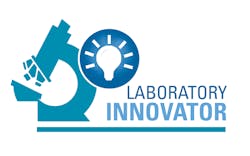Over 45 years of making a difference in the laboratory
COLA has been accrediting clinical laboratories for over 30 years. COLA received deemed status to accredit pathology from CMS in March, and then in September we were approved to deem pathology laboratories in California compliant with that state’s requirements. Laboratories performing testing in the specialty of pathology now have another choice for their accreditation.
COLA’s pathology program is comprehensive, educational and meets or exceeds all CLIA regulatory requirements. We monitor the industry closely to ensure that our criteria reflect current industry guidelines and regulatory requirements. COLA’s accreditation program is not just a list of criteria to comply with. Choosing COLA gives a laboratory access to multiple tools to assist with achieving compliance and applying best practices. The Accreditation Manual is well-organized and written clearly and simply, and COLA customers also have access to an entire library of educational Primers on critical topics such as safety, quality, personnel, and training. In addition to these tools, we have a COLAcentral customer portal, a comprehensive dashboard that makes it easy for laboratories and laboratory groups to manage their accreditation.
COLA can accredit histopathology, oral pathology, dermatopathology, and cytology laboratories. This includes full-service pathology laboratories as well as limited-service sites such as those performing Mohs surgery, frozen section, fine needle aspiration, or rapid on-site evaluation procedures. In addition, COLA provides coordinated laboratory surveys for health systems that have multiple laboratory sites.
I am very pleased to be part of the COLA family knowing that laboratories enrolling in the pathology accreditation program will be surveyed by knowledgeable, experienced COLA staff and subject matter experts with years of working experience in the laboratory.
Before becoming the Director of Pathology Accreditation at COLA, you were an Anatomic Pathology Operations Manager for Clinical Pathology Laboratories in Austin, Texas. Could you share your top five tips for being accreditation ready?
- Ensure all staff are trained on all procedures and that the procedures are consistently followed.
- Ensure that laboratory staff are familiar with what to expect during a survey. If staff is equipped with that knowledge, they won’t be intimidated while the survey is in progress.
- Schedule routine survey preparedness meetings throughout the entire accreditation cycle. When I was working in the laboratory, supervisors were all required to review criteria and participate in mock surveys to ensure they understood the survey process.
- Perform departmental self-surveys regularly. This doesn’t have to be a daunting task: rotate the responsibility so that everyone has a turn to audit laboratory processes in advance of biennial surveys. COLA has a self-assessment tool that makes this process easy.
- Keep the laboratory prepared for a visit from any regulatory agency at all times. Keeping documentation well-organized and readily accessible can make surveys go much more smoothly.
What are some laboratory safety concerns you would like to bring awareness to for MLO readers?
What I found during my time as a safety officer is that staff sometimes thinks that safety is solely the company’s responsibility. The organization develops safety policies and procedures and provides equipment intended to keep employees safe from exposure or injury. However, every employee also has a responsibility to work safely by being compliant with those policies and using equipment properly. OSHA’s Laboratory Safety Guidance is an excellent resource.
Maintaining a safe laboratory workplace is everyone’s responsibility. In some cases, staff may adhere to safety policies when managers are present, but be more lax about safety when there’s no direct supervision. Employees must be trained on the importance of adhering to safety policies at all times.
Employees must feel empowered to report noncompliance with safety policies or any incidents or near-misses that they witness. Noncompliance could ultimately result in exposure or injury to laboratory staff and patients. The most common causes of safety incidents are employees not following safety policies, not wearing appropriate PPE, not paying attention to their surroundings, and being distracted or rushed in the workplace.
Incidents and accidents are costly! Medical treatment for injuries can be expensive and can also result in lost time if staff cannot work due to injury. Depending on the incident, there may also be a loss or waste of reagents, loss or damage to patient specimens, or damage to instruments. There are also hidden costs associated with safety incidents: feeling unsafe can affect staff morale and productivity.
In a recent survey on molecular testing, MLO readers shared that acquiring supplies is a lot more difficult in the past year. How has COLA seen laboratories addressing these supply issues?
It was amazing to see how teams from all areas of the laboratory came together to manage shortages and continue to deliver results for their patients. One way they coped was to validate duplicate methods, especially for SARS-CoV-2 testing. If one method’s reagents weren’t available, the laboratory could switch to the second validated platform or method without any delay in testing.
Laboratories also modified batch testing schedules to maximize efficiency; fewer, larger batches allowed them to stretch controls further. Personnel managed and maintained their PPE to reduce waste. Phlebotomists drew only what was necessary for testing to conserve on supplies. In histology, reagent use was monitored carefully. Modified procedures were implemented to minimize reagent use without sacrificing quality. They prioritized which tissues to process when reagents were low to ensure diagnostic specimens were not delayed. In addition, across all specialties, staffing schedules were adjusted to maximize efficiency.
I spoke with several of our surveyors recently, and they noted that while laboratories are still experiencing some supply issues, they are not as critical as they were during the height of the pandemic.
Pathology and laboratory medicine have important challenges in workforce capacity going into the future. What do you see the field doing to address these challenges?
The staffing shortage in the laboratory industry is affecting every position. Laboratories are short on clerical staff, couriers, phlebotomists, managers, and qualified and experienced technical and testing personnel. Addressing these challenges requires promotion, recruiting, and retention for all laboratory positions.
When choosing a “medical” field, most students think of nurses and doctors. Educating students on the types of laboratory careers available, including the various specialties, is crucial when students are making early career choices.
Partnering with schools can be a successful approach. For example, histology partnerships exist where a laboratory partners with a formally recognized training program. The student completes didactic and hands-on training per the program’s requirements and then takes the program exam. Those who successfully complete the program are then eligible for ASCP certification. It’s win-win for the company and the employee, especially if the arrangement includes a defined work commitment period following program completion.
COLA has also launched the Workforce Action Alliance, a diverse panel of experts developing strategies for addressing the laboratory workforce shortage. The group first met during COLA’s Laboratory Enrichment Forum in May of 2022. These leaders will come together at COLA’s Workforce Action Alliance Summit in Fort Worth, Texas in May of 2023 to continue the discussion and find actionable ways to work together to build the capacity and resiliency of the laboratory profession well into the future.
You have had a long career in the clinical laboratory field. What advice can you share on career longevity?
You have to love your job and what you are doing. A good employee has a good work ethic and goes above and beyond because they know that effort will benefit everyone. There are no handouts: you have to work hard, learn, and apply the knowledge and skills you’ve been taught.
I started working in a small community hospital when I was 18 years old. I didn’t know a thing about laboratory testing or regulations, and I never dreamed that it would be my lifelong career. I worked for nearly four years performing clerical duties, making media for microbiology, and sending out tests. I greeted patients, drew blood, ran instruments, and performed manual tests under the supervision of the med techs. I was on the ER code team. I trained to be an EMT and took midnight calls for the hospital’s ambulance service after working day shift in the laboratory.
Every few weeks a pathologist, our laboratory director, visited from the larger regional hospital. He offered to train me as a histotech if I would train to assist with autopsies. I said, “Well, if I can get through the autopsy, I’ll do it.” I trained and studied and in 1982 passed the ASCP boards to be a certified histotechnician, then remained in the field for 42 years. My record for not calling in sick is 9 years, and then I broke my leg! But that’s another story!
My career has taken me from Michigan to Alaska, Oregon, Missouri, Texas and now back to Michigan. The pathologists and laboratory professionals I have worked with always encouraged me to do more. With each job, I have gained more knowledge, responsibility, independence, and trust.
The more you know and the more you use that knowledge, the more valuable you’ll be to any employer. My career has been long and rewarding and one full of adventure. One of my goals in life has always been to make a difference. I hope that I have.


